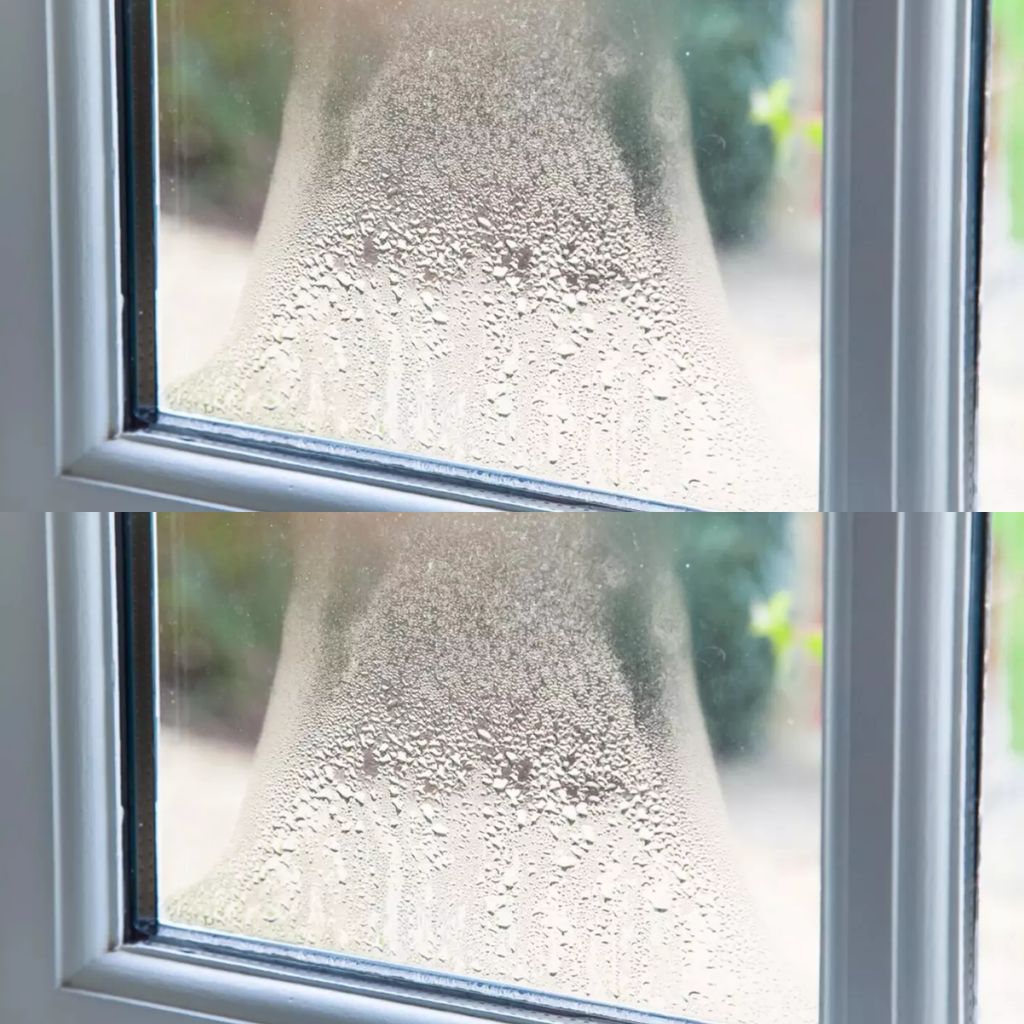ADVERTISEMENT
Cold windows contribute to condensation because they draw moisture from the warmer air inside. Insulating your windows helps maintain the temperature of the glass and prevents moisture from forming.
For Complete Cooking STEPS Please Head On Over To Next Page Or Open button (>) and don’t forget to SHARE with your Facebook friends
– **Install double-glazed windows**: Double glazing provides an extra layer of insulation between the inner and outer panes, which helps keep the glass warmer and reduces condensation. If replacing windows isn’t an option, consider installing **thermal window film** as an alternative.
– **Seal any gaps**: Inspect your window frames for gaps or cracks that may allow cold air to enter. **Seal these gaps with weatherstripping** or caulk to prevent drafts and maintain the warmth inside your home.
– **Thermal curtains or blinds**: Installing heavy-duty curtains or blinds can add another layer of insulation to your windows. This will help keep the inside temperature more stable and prevent condensation from forming.
#### **4. Adjust Your Home’s Temperature**
A drastic difference between indoor and outdoor temperatures can increase the likelihood of condensation on windows. Here’s how you can balance the temperatures in your home to reduce moisture buildup.
– **Keep your home at a consistent temperature**: Avoid extreme fluctuations in indoor temperatures, as they can cause condensation to form. Try to maintain a steady temperature throughout your home, particularly in colder weather.
– **Use space heaters carefully**: In rooms where you tend to notice condensation, use a space heater to maintain warmth, but be mindful not to overheat the room. Keep the room temperature slightly above the outdoor temperature to minimize the risk of condensation.
#### **5. Dry Wet Surfaces Immediately**
Moisture buildup from wet surfaces or activities can contribute to high humidity levels in your home, leading to condensation.
– **Wipe down wet surfaces**: After showering or cooking, quickly wipe down any wet surfaces. This includes **bathroom tiles, sinks, countertops, and kitchen surfaces**. By removing excess moisture, you can prevent it from evaporating into the air and contributing to condensation on windows.
– **Use a squeegee**: If you notice condensation or water droplets on your bathroom or kitchen windows, use a **squeegee** to wipe them away. This will help remove moisture before it can build up.
—
### 🌿 **Additional Natural Solutions to Prevent Condensation**
In addition to the practical tips above, here are a few **natural remedies** that may help reduce moisture and prevent condensation on your windows:
#### **6. Houseplants**: Surprisingly, houseplants can help regulate humidity in your home. Some plants naturally absorb moisture from the air, which can reduce condensation levels. Consider adding plants like **peace lilies**, **English ivy**, or **Boston ferns** to rooms where you notice high humidity.
#### **7. Salt as a Moisture Absorber**: Place small bowls of **rock salt** or **baking soda** in rooms prone to condensation. These natural desiccants can help absorb excess moisture from the air and keep your windows drier.
—
### 🧽 **Dealing with Existing Condensation**
If you already have condensation buildup on your windows, here’s how you can clean it and prevent it from returning:
– **Use vinegar and water**: Mix equal parts of **white vinegar** and water in a spray bottle and apply it to the affected areas. Wipe the windows dry with a microfiber cloth. This will not only clear away condensation but also help prevent mold and mildew growth.
– **Install window film or covers**: If condensation continues to be an issue, consider using **window insulation film** or **plastic covers** during the colder months. This will help reduce the cold surface temperature of the glass and make it less likely to attract moisture.
—
### 🌟 **Final Thoughts: Keep Your Home Clear and Dry**
Condensation on windows doesn’t have to be a persistent problem. By following these expert tips and taking a few simple steps, you can prevent moisture buildup, reduce humidity, and keep your windows clear and dry. Whether it’s improving ventilation, using insulation, or regulating humidity levels, these practices can go a long way in creating a comfortable, healthy living space.
Start implementing these easy-to-follow tips today, and enjoy a home free from condensation — no more foggy windows or dampness!
